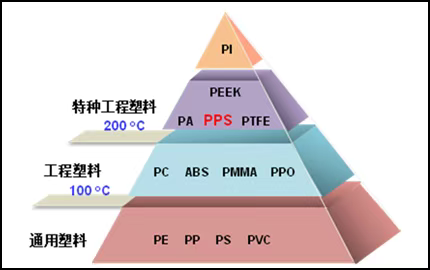
- English
- 简体中文
- Español
- Português
- русский
- Français
- 日本語
- Deutsch
- tiếng Việt
- Italiano
- Nederlands
- ภาษาไทย
- Polski
- 한국어
- Svenska
- magyar
- Malay
- বাংলা ভাষার
- Dansk
- Suomi
- हिन्दी
- Pilipino
- Türkçe
- Gaeilge
- العربية
- Indonesia
- Norsk
- تمل
- český
- ελληνικά
- український
- Javanese
- فارسی
- தமிழ்
- తెలుగు
- नेपाली
- Burmese
- български
- ລາວ
- Latine
- Қазақша
- Euskal
- Azərbaycan
- Slovenský jazyk
- Македонски
- Lietuvos
- Eesti Keel
- Română
- Slovenski
- मराठी
Here is the professional English translation of the PPS film description, maintaining technical accuracy and the original data:
2025-07-22
Currently, there are limited upstream manufacturers synthesizing PPS resin, but multiple processors utilize PPS pellets to produce plastic components widely used in automotive and electronics industries. In contrast, domestic producers capable of manufacturing PPS films via biaxial stretching or casting processes remain scarce. Films with thicknesses around 16–25 μm can serve as base films for tapes. By leveraging PPS film’s exceptional properties—such as high-temperature resistance, superior electrical insulation, and excellent chemical resistance—significant untapped application value exists in demanding fields.

Key Properties of PPS Film:
1. Thermal Resistance:
Melting point exceeds 280°C; heat deflection temperature surpasses 260°C; long-term service temperature ranges from 180°C to 220°C. This significantly outperforms common PET films (105–120°C) and approaches PI films (250–280°C).
2. Low Water Absorption:
Physical properties remain stable under varying environmental temperatures. Resists degradation in high-temperature steam environments.
3. Chemical Resistance:
Demonstrates exceptional durability against numerous organic chemicals. Resistant to sulfuric acid, hydrochloric acid, phosphoric acid, hydrofluoric acid, sodium hydroxide, potassium hydroxide, hydrogen peroxide, etc. Insoluble in common organic solvents below 200°C.
4. Flame Retardancy:
Inherently flame-retardant.
5. Electrical Performance:
Dielectric constant: 3.0 (at GHz frequencies); dielectric strength: 250 kV/mm; volume resistivity: 5.0×10¹⁷ Ω·cm. Maintains excellent electrical insulation even under high temperature, humidity, and high-frequency conditions—surpassing LCP and conventional films.
6. Additional Properties:
High rigidity ensures superior dimensional stability, creep resistance, and wear resistance. Also exhibits exceptional radiation resistance (e.g., against γ-rays and neutron beams).
Applications:
While use as a tape base film represents a niche application, PPS film holds significant promise beyond the established automotive parts market. It serves as a high-performance base film for lithium battery composite copper foils, outperforming PET and PP. Its stable, low dielectric constant creates opportunities in 5G/6G high-frequency communication substrates. Additional applications include insulation for motors and transformers, and potential use in hydrogen energy proton exchange membranes.




